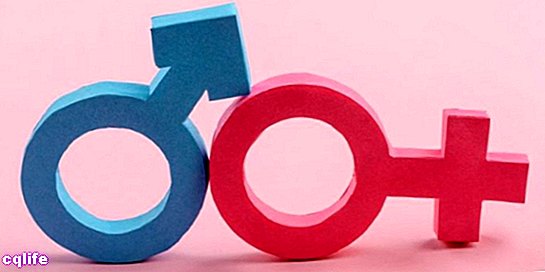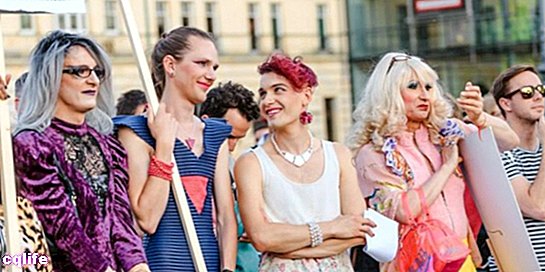We explain what gender is in its various meanings, related to the feminine or masculine and also to the literary.

What is gender?
By the word gender nowadays you can understand many different things. Etymologically, it comes from the Latin genus, which is translated "lineage" or "lineage."
In the dictionary of the Royal Spanish Academy there are very different meanings, ranging from types of textiles, biological taxa to artistic categories. They have in common referring to a “set of beings that have one or more common characters” or a “class or type to which things belong”.
In other words, genres are categories in which we mentally organize the reality of things and beings, according to certain types of common properties. In this way we also think of ourselves, and especially our social roles, traditionally based on the male / female dichotomy.
In any case, thinking about genders is part of the processes usual of our mind. It is also reflected in the language, since the words have one or more grammatical genders, depending on the language to which they belong, which is usually indicated by declensions or through the use of articles.
Thus, for example, in English there is really only one gender, denoted by the article “the”Regardless of whether we are talking about man (the man) or woman (the woman). In Spanish, on the other hand, the genres are two, as expressed in the articles the Y the, with a neutral gender of very specific use (it). While in German, the conventional genders are three: masculine (der), feminine (die) and neutral (you give).
Male gender and female gender

In most of the cultures certain social roles are assigned to men or women according to traditional mandates. These gender roles are based on the separation and distinction of the biological sexes, thus giving rise to two possible genders: male and female.
These genres, however, have nothing to do with the biological, which resides in the body, genes and reproductive capacity, but rather constitutes a kind of abstraction. That is, it is a social and cultural category, which assigns it certain roles, values and senses to masculinity and others to femininity.
Therefore, the masculine is associated with the active, with the evident, the force, the reason, the domain and the violence; and the feminine with the passive, with the hidden, manipulation, intuition, submission and seduction. Even when it is more than evident that all these things are in different proportions in men and women.
Even so, many times a man is required to be "more masculine" or even "shadowed", or a woman to be "more feminine" or "feminine", as if there was only one correct way of being men and women.
In any case, the most conservative sectors of the society They will see with bad eyes that said separation of the roles of each gender is not fulfilled, while the progressive sectors point out that, since it is a cultural identification, it could well be otherwise.
Gender identity

Sex and gender are not the same. Sex is expressed in our genome, and it is manifested in the genitals with which we were born, that is, it is our biological profile. Since the difference of the biological sexes is the basis of the reproduction of the species, only admits the male sex (endowed with a penis, producer of sperm) and the female sex (endowed with vagina, producer of ovules).
Instead, gender is determined by our society and our culture, since it is a social construct. It associates certain characteristics with each sex, that is, it tries to delimit socioculturally what is masculine and what is feminine.
For this reason, the genders have changed over time (what is understood as masculine today was not always the same, for example), while the sexes remain the same.
Each person has a sexual orientation (that is, one sex or several that attract them erotically) and also a gender identity, which is nothing more than the relationship established between their biological sex and their assumed gender. That is, it is a perception subjective and individual that a subject has about their gender, whether or not it coincides with their biological sex.
Thus, it is possible that a person is born male, but identifies subjectively with the opposite sex, or more simply, that a woman feels even if she has male genitalia, or vice versa. If so, there are various possibilities for gender identity, such as:
- Cis men. That is, men whose sex and male gender coincide and are the same.
- Cis women. Similarly, women whose sex and female gender match.
- Trans men. A man born with a female sex, but with a male gender.
- Trans women. Similarly, women born male, but female.
Seen this way, there would be two forms of gender identity: cis, whose sex and gender coincide, and trans, whose sex and gender do not coincide. The latter can make some type of sex change decisions, which can range from just assuming the dress, appearance and social role that they feel is theirs, to undergoing surgical interventions.
This perspective has caused much controversy at the beginning of the 21st century, when various sexodiverse groups, that is, from LGBT communities (Lesbians, Gays, Bisexuals and Transsexuals) have strongly advocated the destigmatization of their gender identity and their way of practicing the sexuality. Their goal is to be accepted in their normal way.
Gender equality
Gender equity is the claim for equal opportunities between women and men, in terms of both work, politics, economics and sexuality. Aspire to understand that women and men are not equal, but there may be Justice, that is, equal opportunities, equal participation in momentous decisions, and equal rewards for the same work done.
The fight for gender equality is carried out by many organizations and feminist movements or vindictive of the place of women throughout the history human.
Literary genres
Finally, the literary genres are the "types" or categories of literary work that exist at a given moment in the history of the literature. They fulfill a double function:
- They tell the reader in advance what type of work it is. In other words, they offer you a horizon of expectations around a book.
- They serve as a guide to the writer. To find out what type of works are conceived and published in his literary field, although it is entirely possible that he tries to attack the "norms" or "rules" of a genre, thus helping to redefine, transform or break it.
The modern literary genres are four:
- The narrative. That he contemplates so much story short, the micro-story, the novel and the chronicle, subgenres whose common feature is that they tell a story (real or fictional) through one or more narrative voices, known as the narrator.
- The poetry. The freest of all, consisting of a description metaphorical of some existential state, combining the perceptions real and subjective of a poetic speaker or poetic voice.
- The dramaturgy. What is the writing of scripts intended for theatrical performance, but which in themselves constitute a genre of reading, in which the actions of the story to represent are given without the intervention of a narrator, but staged in a continuous present.
- The rehearsal. Whose works are texts in expository prose, not narrative, in which the author discusses a topic of his choice, using all the methods of literary writing to embellish your text and defend your subjective stance on the subject.
